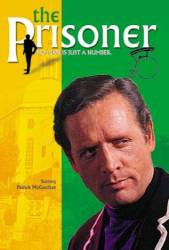Continuity mistake: Number 6 gets into the buggy with the hypnotised woman (Number 8, I think) however, when seen from behind, as the vehicle drives away, there is now only one person in the buggy. (00:29:47)
Continuity mistake: On the beach, the Queen is sitting on a large rock and conversing with Number 6. Then she's seen standing down near the water. After an abrupt cut, she's back on the rock without enough time to have moved there.
Continuity mistake: Number 39 is writing notes on the word association test in her notebook. When the shot cuts to a close-up, however, the notebook disappears from her hands. It's back a short time later.
Continuity mistake: At the start of the chess match, a man holding a stick climbs the ladder behind the Queen and settles in to watch. As Number 6 and the Queen converse throughout the game, however, both the ladder and the man have vanished. They both reappear behind the Queen as the game is ending.
Continuity mistake: Rover herds the boat back to the beach, and several people who were aboard minutes before (some of them unconscious) have somehow disappeared from its decks.
Continuity mistake: Number 6 is taking notes on the Village inhabitants, trying to determine which of them are prisoners and which are keepers. Next to the pond, he's observing Number 62. But on his notepad, he crosses out Number 8.
Continuity mistake: At the end of the chess match, the player wearing blue comes down off his platform, descending the ladder and walking onto the field. In the very next shot, as his opponent approaches Number 6, the man in blue is in the background, once again coming down the same ladder. He didn't have time to climb it again.
Continuity mistake: In the opening shots, the Village center is shown without the giant chessboard set up. In the very next shot, it is suddenly fully laid out on the green.
Continuity mistake: When the command "Knight to Queen's Bishop Three" is given, it's not a knight that moves, but a pawn. In the next long shot, though, Queen's Bishop Three isn't occupied by anyone, pawn or otherwise.
Continuity mistake: When Number 6 is setting up his antenna, there's a woman on the beach in the background in a blue bathing suit. Between takes, her beach umbrella disappears.






Answer: It's even more obvious than you think, you know who number 1 is in the very first episode. When 2 replies to the question "who is #1?" Change the way he answers from you are number one (in the monotone or accented answer to, "You are, number 6. The comma gives you the answer. #6 is #1. It's the tone of the answer.